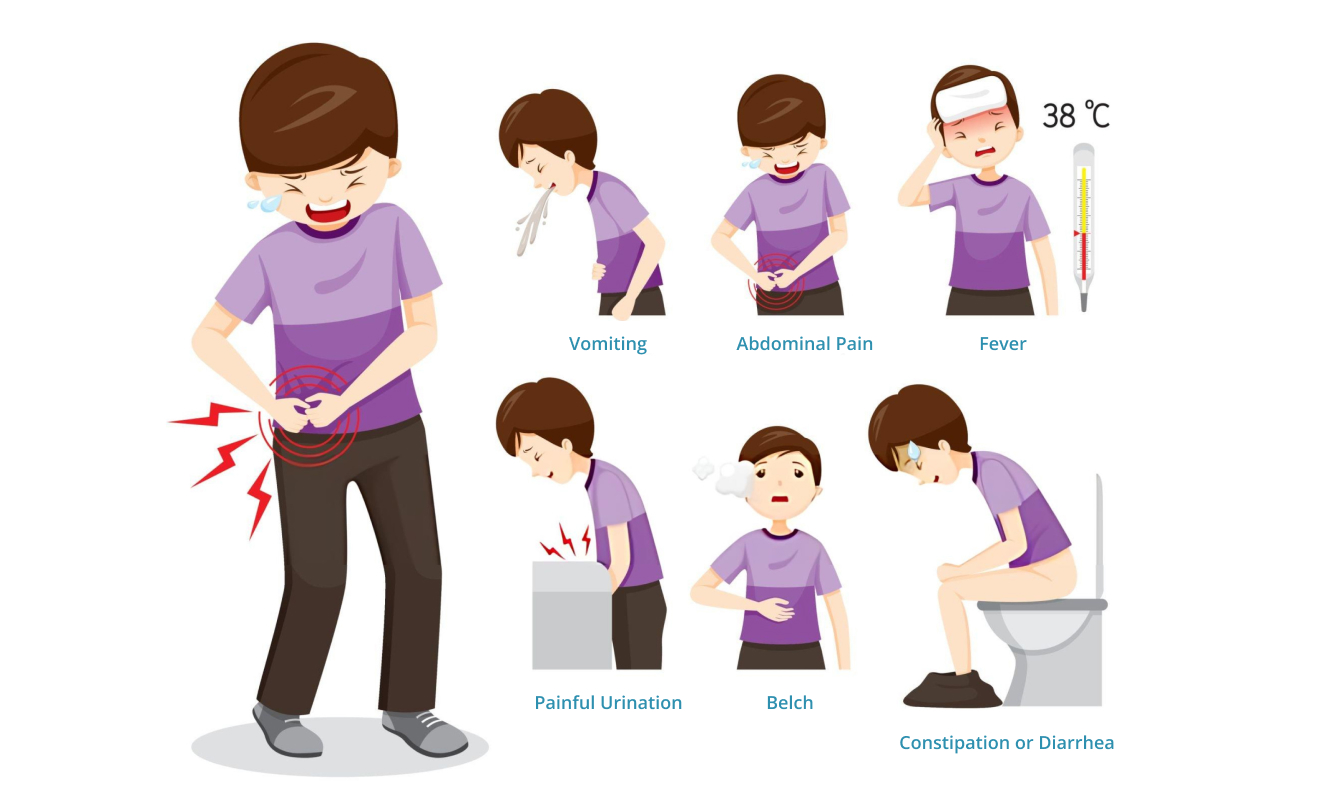A grumbling appendix, also known as chronic or recurrent appendicitis, is a condition that causes mild but persistent inflammation in the appendix. Unlike acute appendicitis, which strikes suddenly and requires urgent surgery, a grumbling appendix develops gradually, producing symptoms that come and go. This intermittent discomfort often leads people to overlook or misdiagnose the issue, mistaking it for indigestion, irritable bowel syndrome, or other stomach conditions.
Understanding what a grumbling appendix is and how it feels is crucial for timely treatment. In the UK, the NHS recognises it as a rare but real form of chronic appendicitis. It can persist for weeks or months before developing into an acute episode. Knowing the symptoms, causes, and treatment options helps individuals seek proper medical attention before complications arise.
Understanding What a Grumbling Appendix Is
A grumbling appendix is caused by low-grade inflammation of the appendix that doesn’t completely resolve. The appendix, a small tube connected to the large intestine, can become partially blocked, resulting in irritation and mild infection. Over time, this can cause repeated episodes of pain, often leading to confusion about what’s truly happening inside the abdomen.
This condition is often described by doctors as chronic appendicitis, where inflammation flares up repeatedly. It’s not life-threatening in the early stages but can progress into acute appendicitis if ignored. Many people experience mild pain that fades temporarily, giving a false sense of recovery. However, early diagnosis and treatment can prevent more serious complications later.
Common Symptoms of a Grumbling Appendix
The symptoms of a grumbling appendix can be vague and easily mistaken for other digestive issues. The most common symptom is a dull, intermittent pain in the lower right side of the abdomen. This discomfort can last for hours or days and may return after short periods of relief. Some people also report mild nausea, bloating, or fatigue that persists without explanation.
Unlike acute appendicitis, where pain intensifies rapidly, a grumbling appendix produces mild discomfort that fluctuates in intensity. There may be no fever or severe tenderness, making it difficult to identify. However, anyone experiencing persistent abdominal pain that keeps returning should consult a GP, as untreated inflammation can worsen over time and lead to infection.
What Does a Grumbling Appendix Feel Like

A grumbling appendix feels like a dull ache or low-level discomfort in the lower right abdomen. The pain might begin around the navel and slowly shift to one side. Some describe it as a dragging or cramping sensation that worsens when moving, coughing, or pressing on the area. It’s not usually sharp or severe, but it’s consistent enough to cause concern.
In some cases, the pain may come after eating, during stress, or even without a clear trigger. It may subside temporarily before returning. Because it lacks the intense pain of acute appendicitis, people often delay seeking help, hoping it will disappear on its own. Unfortunately, this delay can allow the inflammation to persist, increasing the risk of further complications.
Causes and Risk Factors Behind a Grumbling Appendix
The most common cause of a grumbling appendix is a partial blockage of the appendix opening. This blockage may be caused by hardened stool, swollen lymph nodes, or minor infections in the digestive tract. When the appendix cannot drain properly, bacteria build up, leading to inflammation and irritation that flares up repeatedly.
Other risk factors include underlying digestive issues like Crohn’s disease, bacterial overgrowth, or inflammatory bowel conditions. Poor dietary habits, dehydration, and low fibre intake can also contribute to chronic irritation. Over time, this ongoing inflammation may cause scarring or fibrosis, resulting in a grumbling appendix that flares up intermittently.
Diagnosing a Grumbling Appendix
Diagnosing a grumbling appendix can be challenging because its symptoms overlap with other abdominal conditions. Doctors in the UK, especially within the NHS, use a combination of blood tests, imaging scans such as ultrasound or CT, and physical examinations to identify the cause of the pain. Sometimes, chronic inflammation can only be confirmed during surgery or after removal of the appendix.
Because symptoms can be unpredictable, GPs often recommend monitoring pain patterns over time. Keeping a symptom diary helps identify when and how the pain occurs. It’s also essential to report any additional symptoms such as nausea, bloating, or loss of appetite. Early consultation with a healthcare professional ensures that the condition doesn’t progress into acute appendicitis.
Treatment Options for a Grumbling Appendix
Treatment for a grumbling appendix depends on the severity of inflammation. In mild cases, antibiotics may help control infection and reduce discomfort. However, this is typically a temporary measure. The most effective and long-term treatment is surgical removal of the appendix, known as an appendectomy, which prevents future episodes of pain or inflammation.
In the UK, most appendectomies are performed using laparoscopic (keyhole) surgery, allowing faster recovery and minimal scarring. After surgery, patients usually recover within a few weeks. The operation eliminates the risk of recurrence and provides relief from chronic pain. If the appendix bursts or becomes severely infected, open surgery may be necessary to remove infected tissue safely.
Grumbling Appendix in Children

A grumbling appendix in children is often harder to detect, as young patients may struggle to describe their symptoms accurately. Parents should look for signs such as ongoing tummy pain, nausea, tiredness, and loss of appetite. The discomfort may seem mild at first but can quickly worsen, making timely diagnosis essential.
Children are more likely to develop complications if chronic inflammation goes unnoticed. Therefore, any child with unexplained, recurring abdominal pain should be evaluated by a paediatrician. Surgery is often the preferred treatment, as it prevents future episodes and ensures the child’s comfort and wellbeing. Early medical attention can make a significant difference.
When to Seek Medical Help
If abdominal pain persists or returns frequently, it’s important to contact a GP. Pain that becomes sharp, is accompanied by vomiting or fever, or spreads across the abdomen may indicate that the appendix has become acutely inflamed. In such cases, visiting an emergency department or calling NHS 111 is strongly advised.
Ignoring the signs of a grumbling appendix can lead to serious consequences, including rupture and infection. Even if the pain seems mild, it’s better to seek professional evaluation rather than risk complications. The NHS recommends not delaying diagnosis, as early detection and treatment lead to better outcomes and faster recovery.
Conclusion
A grumbling appendix may not cause immediate danger, but it should never be ignored. Its symptoms may be subtle, yet they point to an underlying issue that could worsen over time. Understanding the condition, recognising its signs, and seeking timely medical help are vital for preventing complications.
By staying alert to recurring abdominal pain and following NHS advice, individuals can ensure early intervention and peace of mind. Whether through antibiotics or surgery, proper treatment can restore comfort and prevent the risks associated with chronic or recurrent appendicitis.
Frequently Asked Questions
What is a grumbling appendix?
A grumbling appendix is a mild, recurring inflammation of the appendix that causes intermittent abdominal pain.
What does a grumbling appendix feel like?
It feels like dull, aching pain in the lower right side of the abdomen that may come and go.
Can a grumbling appendix go away on its own?
While symptoms may ease temporarily, the condition often returns until treated properly.
What are the symptoms of a grumbling appendix in a child?
Children may experience tummy pain, nausea, tiredness, or loss of appetite that persists.
When should I see a doctor?
See a GP if pain continues for several days or worsens suddenly, especially with fever or vomiting.
You may also read: Mary Berry Banana Loaf – Easy, Moist & Classic Recipe for Perfect Homemade Bread


